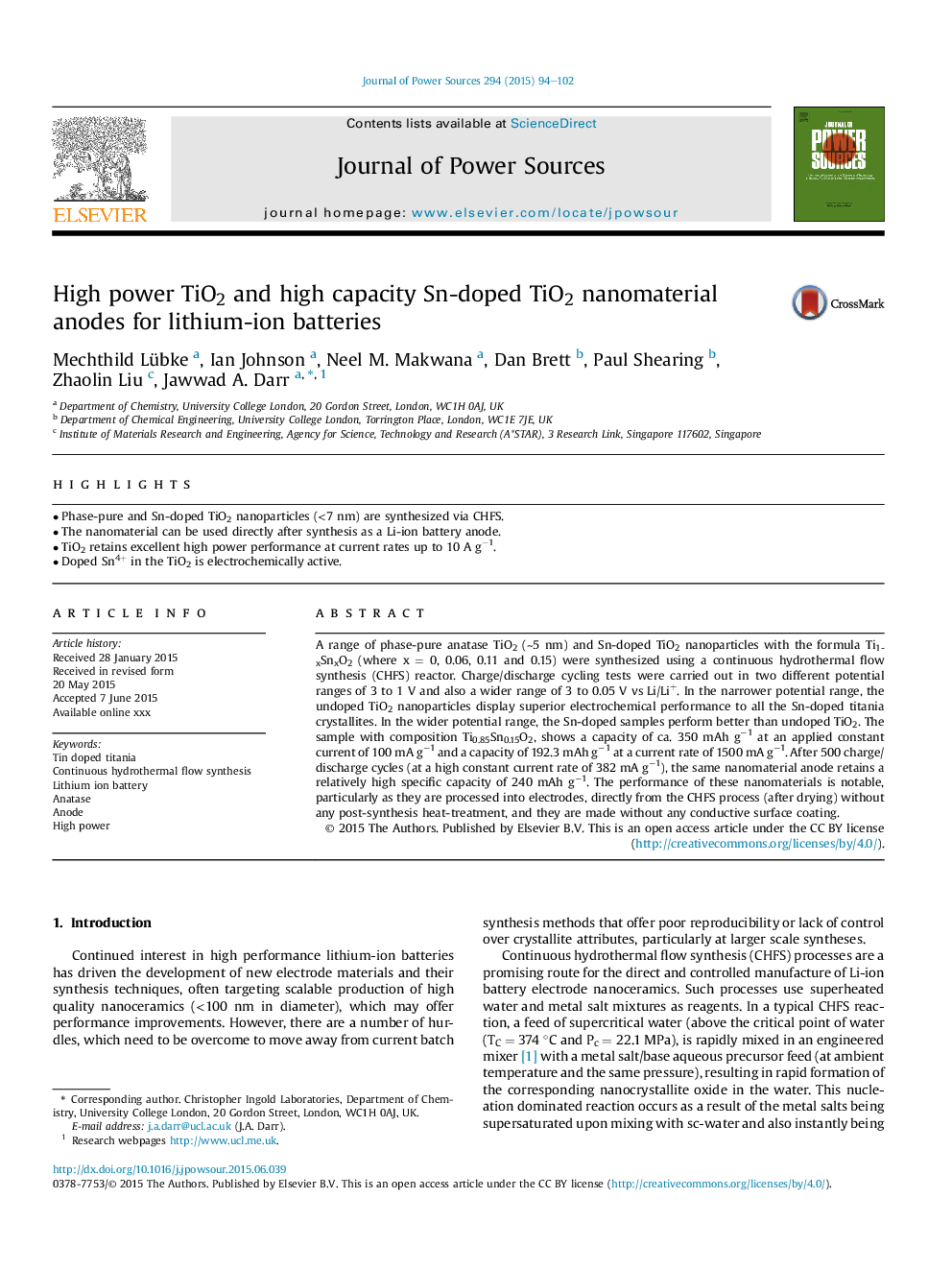| Article ID | Journal | Published Year | Pages | File Type |
|---|---|---|---|---|
| 7731081 | Journal of Power Sources | 2015 | 9 Pages |
Abstract
A range of phase-pure anatase TiO2 (â¼5 nm) and Sn-doped TiO2 nanoparticles with the formula Ti1-xSnxO2 (where x = 0, 0.06, 0.11 and 0.15) were synthesized using a continuous hydrothermal flow synthesis (CHFS) reactor. Charge/discharge cycling tests were carried out in two different potential ranges of 3 to 1 V and also a wider range of 3 to 0.05 V vs Li/Li+. In the narrower potential range, the undoped TiO2 nanoparticles display superior electrochemical performance to all the Sn-doped titania crystallites. In the wider potential range, the Sn-doped samples perform better than undoped TiO2. The sample with composition Ti0.85Sn0.15O2, shows a capacity of ca. 350 mAh gâ1 at an applied constant current of 100 mA gâ1 and a capacity of 192.3 mAh gâ1 at a current rate of 1500 mA gâ1. After 500 charge/discharge cycles (at a high constant current rate of 382 mA gâ1), the same nanomaterial anode retains a relatively high specific capacity of 240 mAh gâ1. The performance of these nanomaterials is notable, particularly as they are processed into electrodes, directly from the CHFS process (after drying) without any post-synthesis heat-treatment, and they are made without any conductive surface coating.
Related Topics
Physical Sciences and Engineering
Chemistry
Electrochemistry
Authors
Mechthild Lübke, Ian Johnson, Neel M. Makwana, Dan Brett, Paul Shearing, Zhaolin Liu, Jawwad A. Darr,
